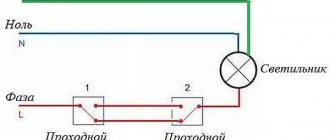On hot summer days, many of us go to the country or to a country house.
At the same time, not everyone there has a full-fledged split system. You can, of course, get out of the situation by installing a mobile option. But even here there are problems with connecting and removing warm air.
What to do? Suffer from sweltering heat? Not at all, there are at least five ways to assemble homemade devices that can partially replace a professional air conditioner.
You can make them at home, without special knowledge of thermophysics and special skills of a craftsman. Let's look at all these methods in more detail, ranging from ineffective ones to those that will significantly reduce the temperature by several degrees and comfortably spend the weekend at the dacha.
Air conditioner without electricity
Let's start with an option that does not require any electricity, ice and all kinds of fans. Some even try to apply the law of conservation of ideal gas to this method of cooling.
For this homemade miracle you will need a lot of plastic bottles. It is best to take two-liter ones with a large diameter.
Cut off their top part along with the neck by about 1/3.
Don’t throw away the lids from them, they will be needed too. They just need a little tweaking. To do this, use a stationery knife to cut off the top part of them.
Next, you will need to take it out of the pantry or buy a sheet of plywood to fit the window. The entire structure is assembled on it.
Cardboard can also be used as a base, as is done, for example, in India or Bangladesh.
This is where this cooling method came from.
However, as they say - the rain comes, the cardboard goes away. Therefore, plywood is a more stable and reliable material.
On this sheet, drill holes every 15cm along the diameter of the neck of the bottles.
It is best to use feather drills. But you can also use a wood crown.
After preparing all the holes, insert the bottles into them and screw them on the back with cut caps.
The plywood itself is mounted in the window of the bedroom or the room where cold is required. If you go to the necks of the bottles and put your palm on them, you can really feel the cold breath of a cool breeze.
How does it all work? After all, there is no fan or ice here that would provide much-needed coolness? Where does the cooling come from?
The inventors explain it very simply. The wide part of the bottle that faces the street acts as an air intake. Under the force of the breeze, the air is compressed and enters the room with the effect of a fan.
However, one condition must be met here - it must be cooler outside than in the room.
This design can work well at night. Moreover, there will be no noise from the fan blades.
However, if you think carefully and remember the laws of physics, then not everything is so simple here. Doesn't an open window look like a narrowed bottle neck?
In theory, a large volume of warm air from the street, passing through a narrow window, should ultimately produce the same cool draft. However, this does not happen.
The same can be said about this “air conditioner”.
During the day, the entire cooling effect of the room will occur ONLY due to its darkening.
With this design you simply exclude the penetration of direct rays of the sun. Consequently, the floor and walls heat up less. This is where all the efficiency comes from.
Where does the coolness come from, because if you put your hand near the bottles, you can really feel it?
In fact, you feel this cold not because the air has cooled, but because at a higher speed, the jet carries away more molecules of moisture or sweat from the surface of your body.
This is where all the sensations come from. To really cool the air, you would need not plastic bottles, but brass tubes three meters long! The law of conservation of energy has not yet been discussed by anyone class=”aligncenter” width=”720″ height=”510″[/img]
There would be a fan in the wide part of the tube and would drive air along the inner walls, which would be heated by it and thereby cool it. Next, throwing a cold stream outwards, from the back narrow side.
However, where there is no electricity at all and there is no desire to buy fans, the method can be tried. If you open another window or door at the same time, the effect can be enhanced by a draft.
Just don’t forget about its danger and your health. However, let us repeat once again, all this works if it is much cooler outside than in your house. If it’s +35C or +40C outside, then a draft won’t help any of the residents of your house.
And you are left without daylight. You can, of course, replace plywood with plexiglass, but the efficiency of such an air conditioner will immediately drop by 90%.
And from the outside, such a futuristic design does not decorate the facade of the building at all. The neighbors will laugh.
And don’t forget about mosquitoes, which will be sucked whistlingly right into your apartment.
Therefore, let's consider more effective and practical options.
How the home climate system works
Before making an air conditioner with your own hands, it’s a good idea to learn how the most common household cooler works. The device consists of two heat exchangers, a compressor, two fans and a throttling device. The heat exchanger is located on the inside of the living space; it takes heat from the passing air masses, after which they return cool to the house.
The refrigerant of the device transfers the removed warm air through the tubes towards the second radiator, which, in turn, transfers it outside. The effectiveness of household climate control systems is determined by the processes of vaporization and condensation, which are accompanied by heat exchange. Household split systems take heat for the refrigerant from the apartment air masses. At this time, the compressor creates pressure in the closed system and transports air through the throttle to another heat exchanger. Here the refrigerant undergoes condensation due to the influence of external air masses and releases thermal energy to them.
Bottled ice and floor fan
For the next method you will need an ordinary floor fan. Without modernization, there is not much sense from it. Unless, of course, you sit directly in front of him all day and night.
In fact, it simply circulates hot air around the room, but does not cool it. However, with simple manipulations, everything can be changed dramatically.
All you need to do is attach a couple of bottles of ice to it with wire. Fill plastic bottles with water and freeze them in the freezer.
When the “cooling cartridges” are ready, tie their necks together with wire.
After that, hang them behind the fan blades.
To ensure that cold air is taken in from the rear and no extraneous warm air is sucked in, glue a homemade cardboard casing around the circumference of the fan with double-sided tape.
In fact, the air conditioner is already ready for use. Most of the time when making it will take you to freeze the ice in bottles.
To have a constant replacement supply, I advise you to freeze 6-8 of them in advance. In just half an hour, such an installation can “cool down” a small room by a couple of degrees.
However, this seemingly simple method has many disadvantages.
- ice in bottles melts quickly
You will have to place a basin under the fan, and change the cartridges periodically. Therefore, you definitely can’t leave such a thing on at night.
- short circuit danger
Your floor fan is turned on via a 220V carrier. And next to the wires from it, it will be constantly humid and damp. You will also need special carriers.
Therefore, it is recommended to replace melted bottles with new ones only after turning off the power. Otherwise, the whole thing could short-circuit and lead to a fire.
Water cooling unit
The idea is simple and at the same time effective: cold water is pumped through a heat exchanger with a fan located indoors. Since its temperature lies in the range of 5-10 ° C, the air flow cools and the room becomes cooler. The source of water is a well or borehole, and the heat exchanger is a radiator from a car or an old air conditioner.
Important note. Unlike other home-made units, a water installation operates on the principle of a heater and can not only cool the air in the house, but also heat it. It all depends on the temperature of the water supplied inside the radiator.
An original idea is to insert a radiator with a fan into the case from an old TV.
The flow cooling system consists of 3 elements:
- the heat exchanger itself;
- submersible or well pump;
- insulated water supply and discharge pipelines.
Manufacturing of water conditioner
The cooler assembly procedure is as follows:
- Place and secure the car radiator in a convenient place in the room.
- Lay a supply and return line to it. To connect to the element pipes, use adapters and clamps.
- Mount the pump in a well or borehole and connect the coolant supply pipeline to the heat exchanger to it.
- Insulate the section of the supply pipe so that the water does not heat up ahead of time. It is not necessary to insulate the return line.
You can use a car heater radiator for the cooler.
To make a water conditioner and run it successfully, you need to solve 2 problems: where to put the water and how to regulate its flow rate, because the pump’s performance usually exceeds the need. We propose to solve the problem of water discharge in the following ways:
- collect in a storage container from where the garden is watered;
- transfer to another well, as a water-to-water heat pump does;
- organize a closed circulation loop with a second heat exchanger submerged at the bottom of the well.
Water circulation can be organized according to a heat pump scheme
For reference. It is not recommended to water cultivated plants with cold water. Therefore, you will kill two birds with one stone if you first heat the well water in a radiator - an air cooler.
To reduce the pump's performance, you need to control the engine speed, which is impossible without a frequency converter (aka inverter), which will cost you a pretty penny. All sorts of autotransformers and other ideas are not suitable - so you simply “put down” the electric motor of the pumping unit. Without purchasing expensive equipment, the issue can be resolved as follows:
- for a well up to 10 m deep, you can use a circulation pump for heating of the appropriate power;
- You can limit the flow of water to the radiator using a bypass valve that discharges part of it back into the well. An example of the operation of a water conditioner is shown in the next video:
Pros and cons of a flow system
Briefly about the positive aspects:
- The air conditioner is capable of both heating and cooling the room;
- the design is simple compared to a factory split system;
- even if you have to buy a pump and pipes, the manufacturing costs will be low.
We have already listed some of the negative aspects and ways to eliminate them - difficulties in regulating the supply and the problem of water discharge. There is another drawback: the system cannot be used in an apartment (there is no source of cold water) or in a car for obvious reasons.
For reference. The simplest version of a cooler can still be installed in an apartment. It is a household fan, on whose grille there is a coil made of a copper tube through which water flows. The only question is where to get such cold water and how much to pay for it according to the meter, if you take it from a water tap.
Conclusion. A homemade air conditioner - a water heater - is a completely viable design. If you wish, you can make a decent cooler for a private house, provided that there is a well on the site with groundwater of an acceptable temperature.
Air conditioner from a plastic container
To make the third option, you will have to tinker a little with its production. For assembly you will need:
- plastic container or cardboard box
- corner from a plastic pipe
These usually go to water supply or sewerage.
- food foil
- scotch
- exhaust fan
First of all, cover all the inner walls and bottom of the box with foil.
Install a fan and a neck from a plastic pipe on the top of the lid. Use a marker to trace the outline and cut out the corresponding holes.
The operating principle is simple. The fan will suck hot room air inside, and cold air should come out through the pipe.
To do this, place bottles of ice inside again. You can't go anywhere without them.
To prevent extraneous air leaks, it is advisable to seal the gaps from the holes after installing the tube and fan with tape.
Plug the hood plug into the socket and enjoy the coolness. Such a homemade air conditioner can cool the room by almost 7-8 degrees in half an hour.
Which is a more than acceptable result for such a cheap model, assembled with your own hands. Not all floor-mounted mobile air conditioners are capable of coping with such a task.
At the same time, there will be no puddles, basins or safety problems around. Ice in bottles will, of course, melt, so it is better to use plastic containers rather than cardboard boxes.
Someone on the Internet advises replacing regular bottled ice with dry ice. Supposedly this will get rid of moisture. Don't listen to such advisers.
When dry ice evaporates in confined spaces, it releases dangerous levels of carbon dioxide. Therefore, it is even recommended to transport it only in trunks.
Cooling using Peltier elements
The use of these parts to assemble a homemade air conditioner is a controversial issue. It's all about the energy consumption of Peltier elements (otherwise known as thermoelectric converters), which is incomparable with the amount of cold produced. Outwardly, they look like plates with 2 wires; when electricity is connected, one surface of the element generates heat, and the other - cold.
What do home craftsmen and car enthusiasts who strive for comfort do:
- Buy from 4 to 8 Peltier elements and mount them with the “hot” side on a ribbed aluminum radiator.
- This radiator is installed in such a way that it is cooled by street air.
- A cooler from the computer is attached to the “cold” side of the converters so that it supplies room air to the plate.
Air cooling circuit using a Peltier converter
Note. For better heat transfer, the element is coated with thermal paste (“hot” edge) before installation on the radiator.
Peltier elements actually cool the air flow, but at the same time they simply consume electricity. After all, half of the energy is wasted because it is converted into heat and dissipated in the atmosphere. That is, for every Watt of electricity expended you will receive no more than 0.5 W of cold, while with a split system this ratio is completely different – 1:3. You can see how this works in practice in the next video:
Bucket conditioner
The above design can be improved and simplified. Instead of a container, use a plastic bucket with a lid, and insulate its walls.
To do this, place pre-cut pieces of foam plastic in even rows inside the bucket.
The bottom is also insulated with foam plastic.
All this will allow the ice to retain its original condition for more time and your air conditioner will last much longer than the previous model.
In the upper part of the bucket, cut out the outlet holes and glue the pipe sections there. The cold will come through them.
The exhaust fan cuts into the lid and sits tightly on the glue.
Frozen bottles or ice in plastic bags are again placed inside.
The lid closes and voltage is supplied to the fan. This air conditioner will work properly for a much longer time than the first model in a plastic box.
Pros and cons of self-made climate systems
Homemade air conditioner from improvised means also has its advantages and disadvantages. It is suitable for those citizens who live in regions with a temperate climate and cool summers. In the south such cooling systems will be of little use.
The advantages of home split systems include:
- Easy installation. Some types of homemade climate systems can be built by people who have nothing to do with technology. Moreover, to install such devices you need parts that can be found in almost every home;
- Positive result;
- Low cost.
These advantages are offset by disadvantages:
- The need to regularly recheck the design and change the ice (if used). This method is not suitable for those who want to cool the room at night;
- Possibility of short circuit when ice melts;
- The duration of room cooling is only a few hours.
With frequent use of a homemade air conditioner, you can notice that the level of moisture in a living room increases significantly during its operation, because of this a person feels much worse than in the heat. This is due to the fact that the air masses entering the room constantly pass through the ice.
To summarize, we can say that homemade split systems from improvised means are working devices that can help a person out during periods of extreme heat. It is advisable to use such devices several times a week in cases of urgent need, but not every day.
Regular use is fraught with an increase in humidity in the room, as well as the development of problems with wiring, since many home-made designs operate on the basis of ice and a fan turned on. When ice melts and splashes on it, the risk of a short circuit increases.
Briefly about the main thing
To assemble a homemade air conditioner for your home from a fan and ice, you need to prepare a container, foil, a fan, an L-shaped piece of plastic pipe and fasteners.
In the hot summer, a structure made of plywood and plastic bottles inserted into the window can slightly reduce the temperature in the room.
You can make an autonomous air conditioner if you have a battery or a car radiator.
If you have a long copper tube and a floor fan, you can assemble another version of a homemade air conditioner.
Varieties
There are several types of cold batteries: silicone, gel, water-salt. Having understood their differences, you will be able to understand which is more effective and choose the best option for yourself:
- Silicone. This type of cold accumulator maintains a low temperature for the longest time - from 0 to +5 degrees throughout the week. It looks like a rectangular film package. Inside it is a special silicone mixture that freezes quickly and melts slowly.
- Gel. This type of cold storage battery is the most common. It looks like a dense, sealed, rectangular bag. It contains a gel-like substance inside that keeps the inside of the bag cool. It can also be used as a heat accumulator. It supports a wide temperature range and operates for up to 16 hours. If the filler leaks, you don’t have to worry - simply wipe the surface with a napkin or rinse with water. The gel will not spoil the products, it is completely safe and does not harm the body.
- Salt cold accumulator. Appearance: rectangular plastic box. It contains a water-salt solution inside, which can be added if necessary (but not all manufacturers provide this possibility). The battery maintains low temperatures, down to approximately -10°, throughout the day.
The most efficient battery is silicone. It keeps the temperature for about a week. You can cross the Sahara Desert with it and the ice cream will remain cold. There is a downside: the manufacturer does not guarantee that silicone is safe. If it gets on food without packaging, it can cause poisoning.
Silicone cold accumulator
Silicone cold accumulator
Gel cold accumulator
Salt cold accumulator
Salt cold accumulator PM0941
Cheapest option 2
Photo of the finished machine from a milk flask (can)
Finding a milk can is not a problem now. There are quite a few of them left over from Soviet times, and you can easily find a suitable option on Avito or Yulia.
A flask makes a really good distillation cube of decent size, which is suitable for distilling a large volume of mash. It is not so difficult to process it into a moonshine still, because the principle remains the same as with a saucepan.
A possible option for implementing a moonshine still from a flask.
How to convert a can into a moonshine still
I suggest reading the instructions in text format again, and then watching the video.
Hole in the cover for the fitting.
- Using a 20 mm feather drill, we make a hole in the can lid.
- We insert a brass fitting into it, which is tightly clamped from the inside with a nut and gasket.
- If you plan to monitor the temperature, you can make another hole for a bimetallic thermometer.
- We put a stainless steel gas hose on the fitting, which we connect to the steam tank.
- We make a dry steamer with our own hands from a jar; for detailed instructions, read the link provided or continue watching in a separate video.
- From the steamer we move the hose to the refrigerator, which can be made flow-through or regular. The first option is more effective and complex, but for the second you just need a large container of water (bucket).
- Let's tighten all the nuts and start making moonshine!
Making a distiller from a can on video
One of the most detailed videos from Youtube, the OverCraft channel, has collected almost 250 thousand views. The author shows all his actions on video and makes pop-up tips that describe the diameters and names of the necessary equipment.
The video is short, but it is enough to understand the general principles of processing a can into a moonshine still.
Making a steamer with your own hands
As a bonus, we are posting a video from Antonich and Alexey Podolyak, where the author makes a steamer from an ordinary can. Using this principle, you can even make a bubbler (filtration occurs through water), if it seems to you a more useful and effective device for purifying alcohol vapor.
We believe that any classic distiller should have 1 steamer or 1 bubbler. Combining them or making several at once does not make practical sense. Just wash unnecessary equipment and increase alcohol losses.
Why it's worth a try
If you look at the composition of a purchased product, you can see a whole list of chemical ingredients, for example:
- benzyl alcohol;
- linalool;
- ethanol;
- pental.
These substances function as aromatic fillers, but can be harmful to health and cause a number of diseases. Their effect on the fragile bodies of children and allergy sufferers can be too harmful. Headache, allergic reactions, apathy, nervous disorders are possible consequences of washing clothes with store-bought conditioner.
In addition, making an environmental rinse with your own hands is more profitable than purchasing the product in a store. A large family and the presence of small children are the main reasons for frequent washing. Therefore, thrifty lovers of clean and fragrant things are inspired by the idea of how to make homemade fabric softener yourself. The advantages of a homemade mouthwash include:
- saving the family budget;
- creating your own scent;
- made from environmentally friendly components;
- absence of allergic reactions;
- long storage and more economical use;
- high-quality removal of contaminants;
- softening fabric fibers.
You might be interested
Ventilation Silent technologies SHUFT SHUFT, in partnership with the world expert in impellers, the MES company, created... Artem Masalsky 4538 0
Ventilation Supply and exhaust ventilation for an apartment: effective air exchange systems We spend a long time in the apartment. For a working person, the time of stay... Novikova Natalya 9578 0
Ventilation What should be the humidity in the apartment It should be rightly noted that not all apartment owners, at least... Evgeniy Afanasyev 7679 0
Ventilation Split systems for an apartment: advantages and disadvantages, popular manufacturers, installation Today it is almost impossible to imagine life in the city without air conditioning, especially... Natalya Novikova 8201 0
Ventilation Device for measuring indoor air humidity: the most accurate models Many owners of houses or apartments sometimes forget that the optimal humidity level... Evgeniy Afanasyev 13500 0
Copper tube+hose
Another option for air conditioning, which is quite easy to make at home from a table fan. To do this you need to prepare:
- garden rubber or plastic hose for watering;
- thin copper tube;
- table fan.
The tube is bent in a circle, leaving a gap between the sections for the unhindered passage of air flow, and secured to the device limiter with clamps. One end is connected to the tap, and the other to the drain. The cooling process is also simple - water circulates through the tube and cools it, the air flow passing through the homemade device is cooled.
The disadvantage of the system is that it can only be installed in the kitchen, which results in significant water consumption.
What are the advantages and disadvantages of ready-made units?
Cooling equipment is in great demand in the summer, so air conditioners are installed everywhere. Any of the air conditioners has many advantages, which are indicated by their manufacturers. But the shortcomings are usually kept silent, and there are plenty of them too.
Pros of air conditioners
First advantage. These units are capable of creating a comfortable microclimate. Moreover, a person feels comfortable in an apartment or in a private house both in the summer heat and all year round - in any season.
Second advantage. The air flows entering the room are filtered and cleaned of dust, gases, and other contaminants. There are models that include built-in additions to filters in the form of:
- humidifiers;
- ionizers.
Autonomous cooler
A homemade air conditioner for your home from a fan can be made autonomous: no connection to an outlet is required. For this device you will need:
- two computer fans (coolers);
- corrugated sleeve;
- packing good diapers;
- cardboard sheets;
- on/off button;
- expanded polystyrene;
- glue;
- accumulator (battery).
Before assembling the mini-air conditioner, you need to fasten the polystyrene Source ad-cd.net
First of all, you need to decide what dimensions the autonomous air conditioner will have. It is advisable to make it of such a size that it fits into the trunk of a car without any problems. In this case, you can take a homemade cooler with you, for example, to the country.
To make a homemade air conditioner, prepare six rectangles of polystyrene foam: they will serve as the walls of the cooling box. Fasten them together and cover the outside with cardboard. After this, you can begin arranging the drainage device. To do this, make a hole in the bottom of the box and insert a small tube - condensation will flow through it.
Cut two more holes, one in each of the end walls of the cooling box. The first of them will be used to suck in hot air, and the second will be used to push out cold air. Take a long corrugated plastic hose and attach a cut plastic bottle to one end using several rolls of insulating tape.
You can use a metal hose to build an air conditioner Source youla.io
Using cardboard box
The basis of this cooling system is a regular fan and ice. In this case, everything used during the installation process can be easily returned to its original position without any damage.
In the process of manufacturing a home split system, you will need the following parts:
- Box made of thick cardboard. Its dimensions should easily accommodate a large pan;
- Aluminum pan;
- Table fan;
- Scotch;
- Needle and thick thread;
- Sharp knife;
- Ruler;
- Simple pencil;
- Pieces of ice.
When all the devices are ready, you can start making a home climate system:
- At the first stage, a structure is built from the prepared box that will correspond to the size of the pan. To do this, cut the box with a knife, cut out its bottom and lid (they should be equal to the diameter of the pan);
- The box can be reassembled; to do this, it is assembled in the cut places and treated with glue in several layers;
- From the remaining part of the cardboard you need to cut out a square box lid;
- A circle should be marked in its center; its diameter should be 3 cm larger than the span of the impeller of the table fan;
- The cut circle needs to be set aside; the rest of the sheet will need to be covered with the prepared structure;
- The entire box must be carefully sealed with tape or glue so that the structure does not collapse during operation;
- You will also have to seal small holes if there were any on the side walls of the box (for example, for fingers);
- On one side of the box, cut a rectangular hole 10 cm long and 4 cm wide. It is from this rectangle that cool air will flow into the room;
- Now you will need to cut two identical strips from the remaining cardboard, their length should be 3 mm less than the cutout on the box, and their width should be 5-6 mm larger;
- Connect two rectangles together using a large needle and stiff, dense threads (all corners of the cardboards should be connected with threads, but so that they can be separated by 4 cm from each other);
- Insert the connected cardboards into the cut-out side opening of the structure. Each of them should fit snugly into the top or bottom of the cut hole;
- Using the same large needle and thick threads, sew the cardboards located opposite each other to the structure itself. In this case, there is no need to tighten the threads; they are secured with knots;
- Lay a thick piece of cloth on the floor and place a pan on it;
- Remove the front mesh from the fan and place it on the pan;
- Place large pieces of ice on the grid. You can freeze it in medium-sized plastic cups. To operate a home air conditioner you will need 5-6 pieces;
- Cover the ice structure with the prepared box;
- Insert a fan into the cut-out space located on the lid of the structure so that its impellers point toward the floor (at the pan with the mesh and ice);
- Turn on the fan and start any cooling mode on it.
This design can cool a living space for up to 2-3 hours. After this, the ice will melt and the pan will fill with water. Owners will need to ensure timely replacement of water. Otherwise, the fan may fall into the structure and get into the water. This will cause a short circuit.











